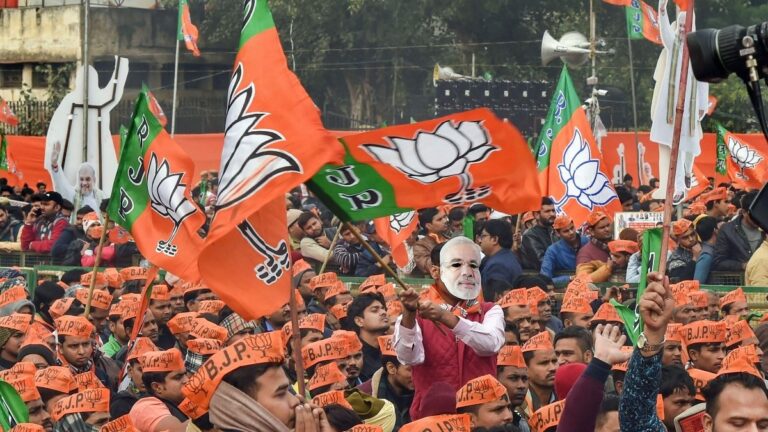At the end of Phase 3, the mood in Congress and its supporters, especially in the media, was very upbeat. While the INDI alliance’s regional allies have maintained a cautious silence, the Congress social media brigade has started naming Rahul Gandhi as the ‘next Prime Minister of India’. Priyanka Gandhi’s vigorous and clear election campaign in Rabareri further excited the class. Some journalists say there is a new spring in Rahul Gandhi’s path, but few are ready to call elections claiming that the tide has turned.
Some of that is due to gamesmanship, but much of it is limited to the digital universe. However, since the spread and density of social media has increased rapidly since 2014, and especially since the coronavirus pandemic, we cannot exclude the possibility that some degree of impact will spill over onto the ground. This can have an impact, but “Satta Bazaar” And perhaps the stock market as well, in some cases.The extent to which voters are influenced by such an atmosphere remains a matter of debate.
The Bharatiya Janata Party’s move in this story-building game was fascinating.It started with a clarion call. “400 pearls” But in the first two stages, it softened its stance, first training its guns in a parliamentary manifesto, claiming there was an ulterior agenda to shift economic resources to certain communities in the name of wealth redistribution. This was followed by a more direct attack on the party’s caste calculations. But after the third phase, the BJP has clearly shifted gears with Prime Minister Narendra Modi’s visit to Ayodhya again and its trump card project of Ram Mandir.
Critics have accused Mr. Modi of moving the goalposts during the campaign. They attribute this to the lack of major issues and the lack of a visible “Modi wave” as was evident in the 2014 and 2019 elections. Some feel that the prime minister is showing signs of nervousness and is even acting on the back foot. But Narendra Modi’s supporters believe this is all part of his strategy, carefully tailored to each stage of this lengthy voting schedule. He is currently giving short bites to journalists on the campaign trail, emphasizing positive messages and exuding confidence.
But this was all about “cutting the chai” (to use a Mumbai expression) and “passing time” around reading the tea leaves as they were. By the end of Phase 4, the doomsday prophets who predicted the defeat of the BJP had started hedging their bets and training their guns on the Election Commission and the usual fall guys, EVMs and electronic voting machines. Some exit poll experts, who were praised for warning the Bharatiya Janata Party at the start of the election, are now saying that there is no change in voting patterns in 2024 compared to 2019. being ridiculed. Spit out the BJP line.
To be sure, there are some secret election operators posing as independent analysts, making a last-ditch effort to sway borderline voters by predicting dire scenarios for the Bharatiya Janata Party. It is unclear whether their views are amplified by official parliamentary channels, but they do not seem to resonate with the public.
In this way, the artificial heat generated by what was originally a lukewarm election is showing signs of cooling down again. Some partners in the INDI alliance are becoming less aggressive. Mamata Banerjee announced that if the alliance forms a government, her party intends to support it from outside. This effectively cuts you off from the group. Only Akhilesh Yadav still maintains a high pitch. This is understandable as large parts of Uttar Pradesh, especially Purvanchal, are yet to vote and it is premature for him to abandon his stance.
Rumors and alleged leaks aside, election experts like Prashant Kishore show how the math is being read in favor of the BJP. For them, it is no longer a matter of whether the Bharatiya Janata Party is winning, but by how much. For the general public, now that the final result is almost certain, there is growing interest in the matches to be played in side courts such as Amethi and Raebareli, and how many seats the Trinamool Congress will win in West Bengal. . If the Samajwadi Party intends to regain lost ground in Uttar Pradesh. The fate of Sharad Pawar-led NCP and Uddhav Thackeray-led Shiv Sena in Maharashtra is also exciting.
If Prime Ministers Modi and Shah did not exude some confidence in the early stages, it was probably because of the scale of their victory. Anything less than an absolute and decisive majority will not fit into the roadmap Mr. Modi has laid out for a third term. It is not without reason that Narendra Modi has called for: “400 pearls” First things first.
Elections have already been held in nearly 70 per cent of all seats, voter turnout is gradually increasing, and the remaining steps are occurring in areas where the Bharatiya Janata Party has a relatively strong position. Therefore, the confidence level of the People’s Party has increased visibly. leaders. Commentators quipped that “PM Modi has got his mojo back,” but the Congress has maintained its “mojo” slogan. “Dakshin mein surf, uttar mein half” It claims that the BJP’s downward trajectory continues.
This poses the danger of 2019 deja vu. For Mr. Modi’s critics, the second anticlimax may be difficult to digest. They may already have a Plan B to delegitimize the election by claiming fraud and irregularities. For this, it would be good to have a playbook borrowed from some foreign examples. We see this further amplified in many editorials in Western media and motivational innuendo on social media. EAM S Jaishankar, who is not known for pulling his punches, said in a recent forum that some Western interest groups are trying to not only influence but also interfere in elections in India. he accused.

